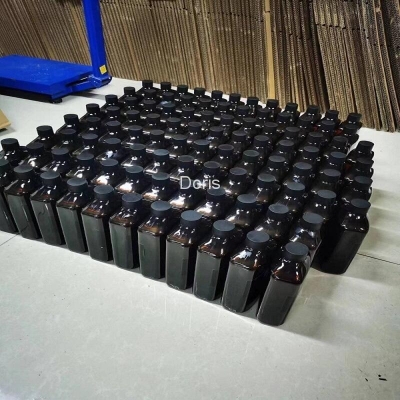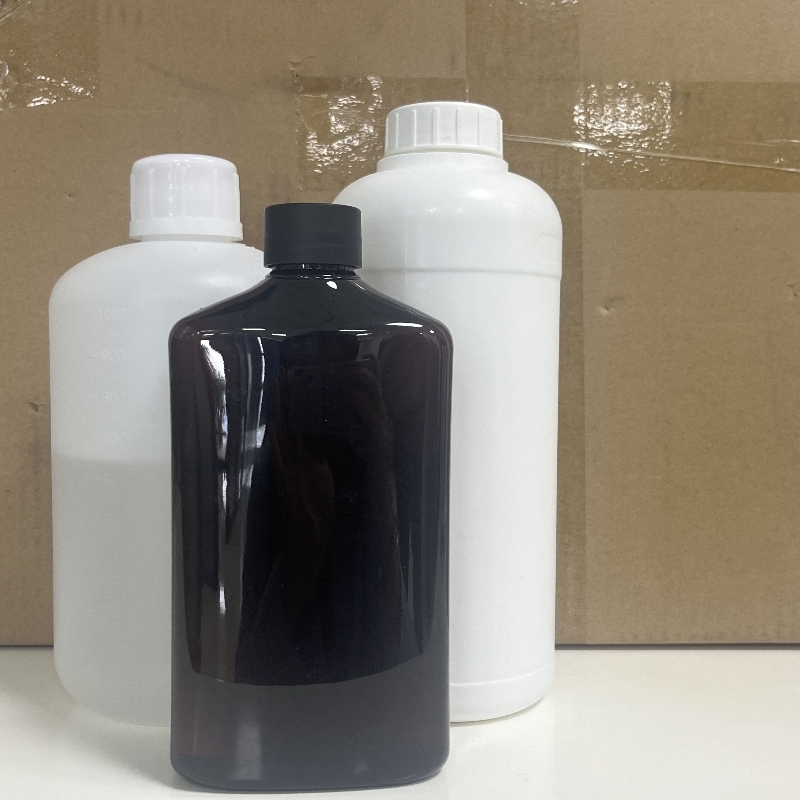-
Categories
-
Pharmaceutical Intermediates
-
Active Pharmaceutical Ingredients
-
Food Additives
- Industrial Coatings
- Agrochemicals
- Dyes and Pigments
- Surfactant
- Flavors and Fragrances
- Chemical Reagents
- Catalyst and Auxiliary
- Natural Products
- Inorganic Chemistry
-
Organic Chemistry
-
Biochemical Engineering
- Analytical Chemistry
- Cosmetic Ingredient
-
Pharmaceutical Intermediates
Promotion
ECHEMI Mall
Wholesale
Weekly Price
Exhibition
News
-
Trade Service
As the world's second largest pharmaceutical market, China began to promote the "4 plus 7" volume procurement policy in the second half of 2018, and the overall logic of the pharmaceutical business and even the industrial market continued to change significantly.
there is no doubt that imports of raw research drugs are the first to be affected by the harvesting, in China's development environment, multinational pharmaceutical companies in recent years in the gradual transformation to adapt to the new environment.
This paper attempts to further comb the adaptation of multinational pharmaceutical companies to Chinese soil and future developments from some of the strategies and plans previously announced by multinational pharmaceutical companies, combined with the recent development of multinational pharmaceutical companies at the Expo and the performance in China in the first three quarters of this year.
01 From the Expo, look at the response of multinational pharmaceutical companies in China first look at a few sets of data: this year's Expo only the number of overseas pharmaceutical companies exhibiting more than 80, and last year, a total of more than 60 medical device enterprises and more than 20 pharmaceutical enterprises to participate in the exhibition; According to AstraZeneca, the opening two days of the expo to reach a contract value of nearly 9 billion yuan; Bollinger Ingham announced that it will continue to increase investment in China, the next five years of capital increase plans of up to 451 million euros; Takeda Pharmaceuticals said that in the next five years in China plans to list more than 15 of the world's first or the best innovative products of its kind; Behind this series of data, all reflect the enthusiasm and confidence of multinational pharmaceutical companies in the Chinese market.
that into the Expo, multinational pharmaceutical companies behind a series of actions, in the end the focus of the layout of the Chinese market in which aspects? The layout of innovative drug research and development, the acceleration of the launch of new drugs in China, and the progress of new drugs in China and around the world , which is almost the consensus of multinational pharmaceutical companies based on drug research and development in China.
And from the perspective of the major multinational pharmaceutical companies set the relevant goals, in the next five years or so, such as Roche, Novarma, Sanofi, BMS, AstraZene half, Lilly, etc. are planning to introduce at least 30 new drugs / adaptive disorders to China.
table below shows the future listing or research and development goals of nine multinational pharmaceutical companies in China, some of which were announced at the Expo.
Pfizer, for example, said at the expo that it had set a strategic goal of "80 percent and 80 percent" to help accelerate the globalization of China's research and development, namely, to achieve China's participation in more than 80 percent of the world's early and critical clinical research within three years, and to declare 80 percent of its projects in the same period and eventually introduce China.
no and NORD have proposed a "China-to-Create" 2.0 plan, which includes accelerating the listing of several innovative drugs in China by 2025, and will include obesity and haemophilia in addition to diabetes.
in its previous 1.0 plan, it also mentioned the goal that more than 90 per cent of global innovative drugs would be submitted for approval in China by 2025.
Figure 1 New drug distribution plan for multinational pharmaceutical companies in China Source: Public information, Whether from the number of new drug plans listed above, or shorten the progress of new drug research and development in China and the world from the point of view of time difference, it can be foreseen that the future will be a large number of imported new drugs into the Chinese market, imported new drugs continue to accelerate the market, the future level of market competition can also be imagined.
fact, in this expo, these multinational pharmaceutical companies in addition to announcing plans and display of new drugs, more is to determine cooperation with domestic enterprises, institutions.
Such as AstraZeneta can be said to be the most signed enterprises, not only with the country's 22 leading hospitals on discipline construction and clinical research signed a strategic cooperation framework memorandum, the introduction of 12 innovative pharmaceutical companies into Wuxi International Life Sciences Innovation Park, but also with Ed Biological, Anhan, Watson Bio and other domestic enterprises reached a cooperation agreement.
through this channel, AstraZeneta's large eco-medical circle is more complete.
In addition, Lilly has reached a partnership with Beijing Changjiang Pharmaceutical Development Foundation and medical artificial intelligence company Airdoc to explore in-depth the treatment management of patients with psoriasis; Novargo and Micromedd have signed a strategic memorandum of cooperation to explore "specific disease health community"; and Novartic and Nord have teamed up with Microsoft to create a diabetes intelligent question-and-answer robot... Figure 2 Some multinational pharmaceutical companies and domestic institutions in the Expo's cooperation signing situation Source: public information, Sino-Kang Industrial Capital Research Center in general, multinational pharmaceutical enterprises for cooperation and channel demand, cooperation with local institutions mainly involved in major hospitals, medical technology enterprises, service enterprises, etc., with a view to the future can better develop new drug research and development, more in-depth access to patient treatment links, seize the C end of the highlands.
this series of actions by multinational pharmaceutical companies, in addition to making adjustments in response to the changing policy environment, is also actively seizing the current digital market in China's emerging transformation opportunities to catch up with this wave of development.
while different companies have different priorities, innovation and collaboration are common voices.
02 Merca East, AstraZeneta and other four China revenue growth rate of 11%-13%, innovation increment is the key multinational pharmaceutical companies in China's transformation path has been a while, so how effective is the implementation? Here's a look at china's performance in the third quarter of this year.
first look at overall revenue.
In the first three quarters of this year, in addition to the year-on-year decline in global revenues of Roche, Pfizer, Bayer (Pharmaceuticals) and Yanjian, revenues of the remaining 13 multinational pharmaceutical companies all increased, particularly at AbbVie, Bashi Meishi and Takeda, which grew by more than 70%.
Figure 3 17 multinational pharmaceutical companies in the first three quarters of 2020 revenue and revenue situation in China Source: Tonghuashun, company earnings report, Zhongkang Industrial Capital Research Center and in China, 8 multinational pharmaceutical companies disclosed the relevant data.
, Bayer said on its earnings conference call that the Chinese market Q3 performance was outstanding, but did not disclose specific sales.
's revenues in China fell 11 per cent in the first three quarters of this year, mainly due to volume purchases, particularly ClopidoGree Q3, which reported revenues of just 72 million euros, down 64.1 per cent year-on-year.
In fact, Sanofi's performance in China has been affected by the "4 plus 7" policy since 2019 Q4, when the company's sales of clopidogrel and Ebershatan both declined significantly, and domestic sales of both products were expected to fall by 50% in 2020.
, however, the impact of volume purchases is gradually decreasing in terms of changes in quarterly revenue in China.
Sanofi CEO Paul Hudson also said on a conference call on the company's third-quarter results that it expects to return to growth in the fourth quarter of 2020 as it "continues to innovate in specialist care and vaccine products in line with china's healthcare industry policy priorities."
, a new round of NHS directory adjustments has been initiated, D'Abis and is under consideration.
In addition to Sanofi, Pfizer's performance in China was also affected by volume purchases (primarily Lipitor Atovastatin and Norvasc ammonia chloride), with revenue down 18 per cent in the first three quarters of the year, including a 21 per cent decline in 2020Q3.
as Pfizer's mature pharmaceutical business, Puqiang's decline is predictable.
This time, the Chinese name of the new company after the merger of Pfizer and Mylan has been finalized as "Chi-Chi", and the global low-cost pharmaceutical giant, which was born out of a strong combination, is certainly going to have a huge impact on the global generic and generic drug market, including, of course, China.
Pfizer will focus more on innovative drugs, and the Chinese market, one of Pfizer's most important markets in the world, will continue to be deep in China.
six other multinational pharmaceutical companies, with the exception of Roche, all achieved growth of more than 10% in China, with growth of 11%-13%.
Q3 revenue rose 13 per cent to $1,914 million ($2.2 billion for the whole of 2019) in the first three quarters of the year, making it presumably growing in the first three quarters.
's pharmaceutical sector fell 1 percent in the first three quarters as it was hit by COVID-19 and biosimilars such as COVID-19 and biosimilars, which fell 20-30 percent in the first three quarters.
in China, Roche's Q3 revenue fell 10 per cent in the third quarter, offsetting sales growth in the first two quarters.
, Roche's decline in China was mainly due to lower COVID-19 and new drugs being included in health insurance prices, according to financial reports.
look at the growing companies below.
As we can see from the table below, most of the growth points of revenue in China of these multinational pharmaceutical companies have been driven by new drugs approved for listing in China in the last 5 years, such as Novartis's Gooding, Mercedon's K-Drug, HPV Vaccine, AstraZeneone's Ochtini, Olapali, Dagli net, etc.
, AstraZeneta and Mercedon have the largest share of new drugs on the market, splitting up the sales of leading MNC companies in China.
and innovations have enabled them to achieve steady growth in performance in China.
in contrast to the above-mentioned declining performance in China, most of the impact of the implementation of volume procurement, growth was partially offset, so accelerating the layout of new drugs in China is its top priority.
, innovation increment is still key against the background.
Figure 4 5 Multinational Pharmaceutical Companies with Revenue Growth in China in the First Three Quarters of 2020 Source: Company Results, China Health Industrial Capital Research Center From these MNC's china performance, revenue in the first three quarters of this year accounted for between 5% and 21%.
Since 2014, MNC's share of revenue in China has largely been steadily rising, especially as AstraZeneta has grown from 8.39 percent in 2014 to 21 percent today, and while its mature drugs have also been affected by the harvest, the growth of new drugs has clearly increased.
MNC's China revenue share is around 10% or less, it shows that the Chinese market is still an important market to be tapped.
Figure 5 MNC China's revenue as a percentage of global revenue for 2014-2019 Source: Minsheng Securities, Zhongkang Industrial Capital Research Center Summary: At the beginning of the "4 plus 7" push, MNC is gradually transforming through its own adjustment Responding to changing policies, including the transformation of research and development innovation, accelerating the market for new drugs in China, the transformation of marketing models and the transition from "product-centric" to "patient-centric" are the transformation concepts that almost all MNCs are talking about, and are constantly being achieved through innovation and collaboration with local enterprises.
And judging from their performance in the Chinese market, the impact of the collection on some MNC is still more obvious, and of course, some MNC due to a number of new drug holdings to offset this part of the impact, still stable growth status.
With the further implementation of the new round of collection, its impact on these MNC will be further observed, but the innovation increment must be the key to victory, the future MNC will continue to add code innovation in the Chinese market.







